Would you like to learn how you can recognize a dunnock and what the dunnock eggs look like? We provide this and other interesting information as well as pictures of the dunnock.

The dunnock (Prunella modularis) is a rather inconspicuous songbird. It usually hides in dense vegetation and is perfectly camouflaged there due to its inconspicuous appearance. However, when their lovely singing comes from hedges or trees, the little bird immediately attracts everyone's attention. The dunnock can also be seen and heard more and more often in our gardens - it is therefore worthwhile to keep an eye out for the talented singer. You can find out how you can clearly identify a dunnock and how you can give the garden bird a home in our large profile.
contents
-
This is how you recognize the dunnock
- How do dunnock females and males differ?
- How does the dunnock singing sound?
- How do you recognize a young dunnock?
- What do dunnock eggs look like?
- Which habitat does the dunnock prefer?
- Where does the dunnock build its nest?
- When is the dunnock's breeding season?
- Where do the dunnock spend the winter?
-
Support the dunnock in the garden: This is how it works
- What do dunnock eat?
- Which nesting aids are suitable for dunnock?
- How can you additionally support the dunnock?
This is how you recognize the dunnock
Dunnock are medium-sized songbirds with brown-black striped plumage. At first glance, they look like one House sparrow, but they have - in contrast to the typical strong beaks of the sparrows - a small, narrow beak. A clear distinguishing feature of the dunnock is also the blue-gray color of the sides of the neck and the throat.
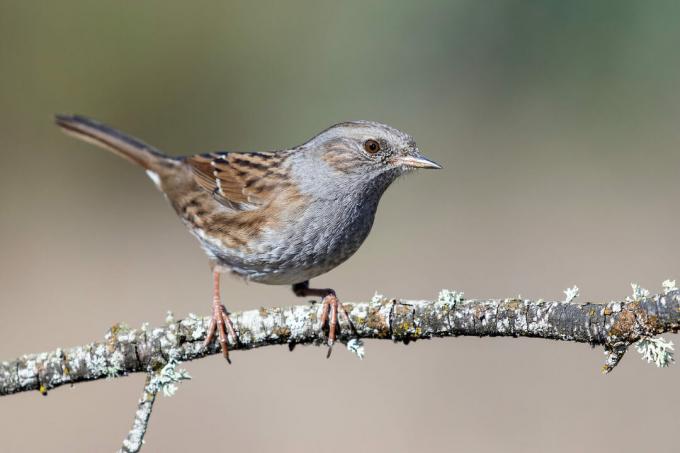
How do dunnock females and males differ?
It is very difficult to distinguish between male and female dunnock. On average, the males have a more pronounced proportion of blue-gray coloring and are therefore somewhat more conspicuous than the females. However, this distinguishing feature is very variable and therefore difficult to apply.
How does the dunnock singing sound?
The dunnock's song is high and clear. It consists of a lovely stanza that is often recited from high waiting: "Tütellitidü-tütellitidü-tüdellüdi". Since the small birds are so rarely seen, this unambiguous song is a good identifier.
Here you can listen to the dunnock singing:
The calls of the songbirds are just as bright and clear, but less easy to see. The dunny's warning call sounds like a sharp whistle: “Tiih!”.
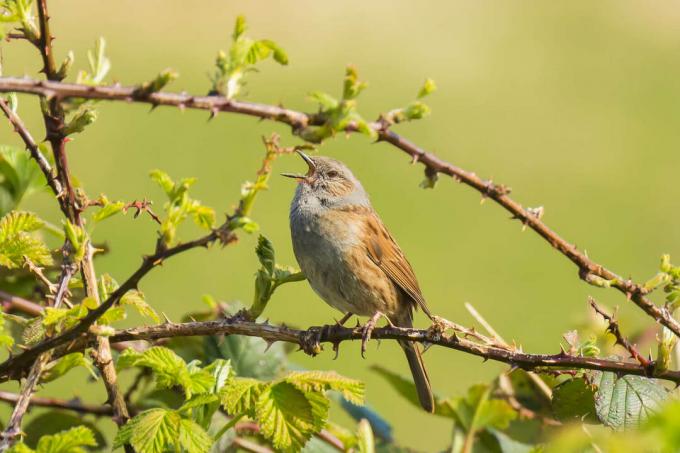
.
How do you recognize a young dunnock?
Young dunnies still lack the blue-gray color of the throat and the sides of the neck, which characterize the adult animals. Their entire plumage is strongly striped black-brown. In addition, their youthful beak is characterized by a bright, orange base.
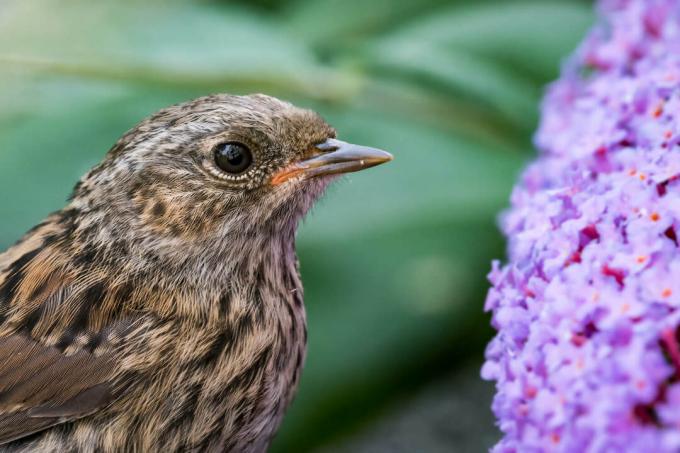
What do dunnock eggs look like?
The eggs of the dunnock are about 1.7 centimeters tall and of a brilliant turquoise blue. They are placed in a bowl-shaped nest made of stalks, roots and other plant fibers, which has been padded with soft materials such as feathers or animal hair.

Which habitat does the dunnock prefer?
Ideally, dunnock inhabit forests that are rich in undergrowth. Coniferous forests are preferred by the small songbirds, but they also inhabit deciduous and mixed forests. However, since there is little undergrowth left in our forest forests, Dunnock are more and more common in parks, gardens and other green spaces.
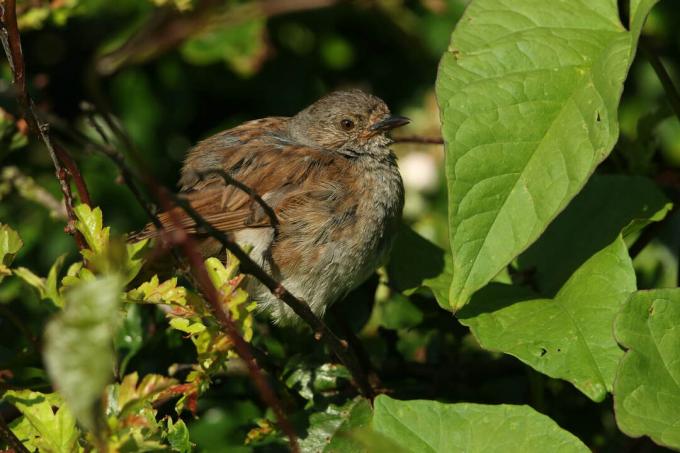
Where does the dunnock build its nest?
Dunnock build their nests in dense vegetation: in hedges, bushes or small trees. The nest is well hidden, but attached relatively close to the ground. The breeding grounds, which are only a few meters high, therefore often fall victim to nest predators such as martens, foxes or cats.
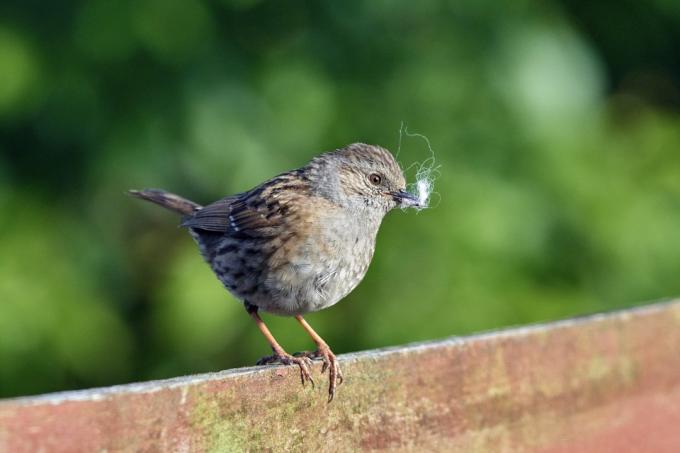
When is the dunnock's breeding season?
The breeding season of the dunnock begins in April. The eggs are incubated for about two weeks - mainly by the female - before the young birds hatch. The little ones are then fed another 14 days in the nest before they are big enough to make their first explorations. Since the vegetation is not that dense, especially at the beginning of the year, and the conspicuous eggs are easy to see for predators, the first brood is often lost. This is why a second or even a third brood usually follows with Dunnock.
Where do the dunnock spend the winter?
Dunnock are partial migrants. This means that not all populations give up their breeding grounds in winter to move south. In mild regions it happens again and again that the small birds stay in their territories during the cold season. Here, too, dunnock can occasionally be observed in winter at feeding places, where they pick up fine seeds. However, most individuals - especially populations from more northerly regions - overwinter in southern Europe or North Africa.
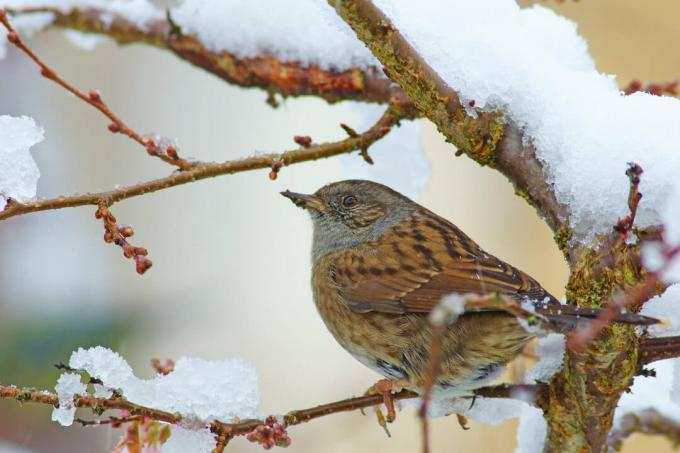
Support the dunnock in the garden: This is how it works
Due to the progressive decline in natural habitat, Dunnock have been increasingly found in close proximity to humans for years. The gifted singers can also feel at home in your garden. Find out here how to create an inviting home for the dunnock.
What do dunnock eat?
Dunnock have a different menu depending on the season. In spring and summer they mainly feed on small animals such as insects, spiders, worms and snails. This protein-rich diet is particularly important when rearing young birds. In winter, on the other hand, they use fine seeds from perennials and wild herbs.
If you want to offer additional food for the small birds in the cold season, they should not use large grains, but rather a softer food. Our Plantura scatter feed For example, in addition to the classic grains such as sunflower or peanut, it also contains small, rich seeds, oat flakes and raisins. It therefore provides food for the dunnock as well as for a whole range of other garden birds in the cold winter time.
Local perennials and shrubs - such as thistles, elderberries, nettles or dock, which the birds provide with small seeds - are also a natural addition. Also domestic, bird-friendly wild herbs form an important food source.
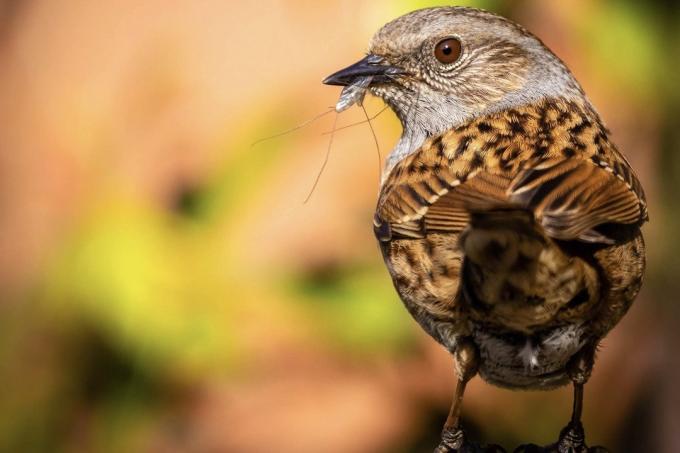
Note: So that perennials provide a food base not only in the late season, but also over the winter, you should only prune them in spring. In this way, the birds can peck the remaining seeds from the fruit stands.
Which nesting aids are suitable for dunnock?
Since dunnock are not cave breeders, no classic closed nesting boxes come into question for them. The free breeders prefer to build their own nest in the thicket. You can therefore support the birds with dense bushes and hedges, which must not be thinned out too much. But even a large brushwood pile can provide protection and living space.
Note: Thorny bushes, such as native bushes, offer an extra dose of protection Wild roses. Inside, the birds can breed undisturbed and are safe from nest predators.
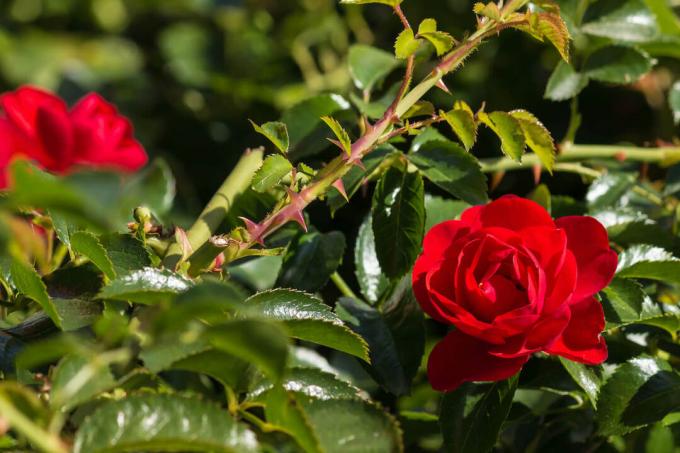
How can you additionally support the dunnock?
While supporting birds in your own garden is a great thing, natural habitat is incredibly important to the preservation of our bird population. Here, too, you can help: for example, campaign for sustainable and ecological agriculture and forestry, which promotes structural elements, provides a home for birds and other animal species and without harmful pesticides gets by.
In the meantime, there is more you can do for the birds in your own garden. Measures for one insect friendly garden not only bring pollinators and other small beneficial insects into your garden, for example, but also ensure a richly laid table for numerous garden birds. You can also offer a matching water point for birds. This is gratefully accepted, especially on hot days. But be careful: at high temperatures, water bowls can quickly develop into breeding foci for infectious diseases. You should therefore clean your water point regularly and, preferably daily, in particularly hot phases.
About designing a bird-friendly garden Incidentally, numerous other bird species are also delighted. Like the dunnock, for example, he is too Black redstart or the wagtail dependent on a rich supply of insects.



